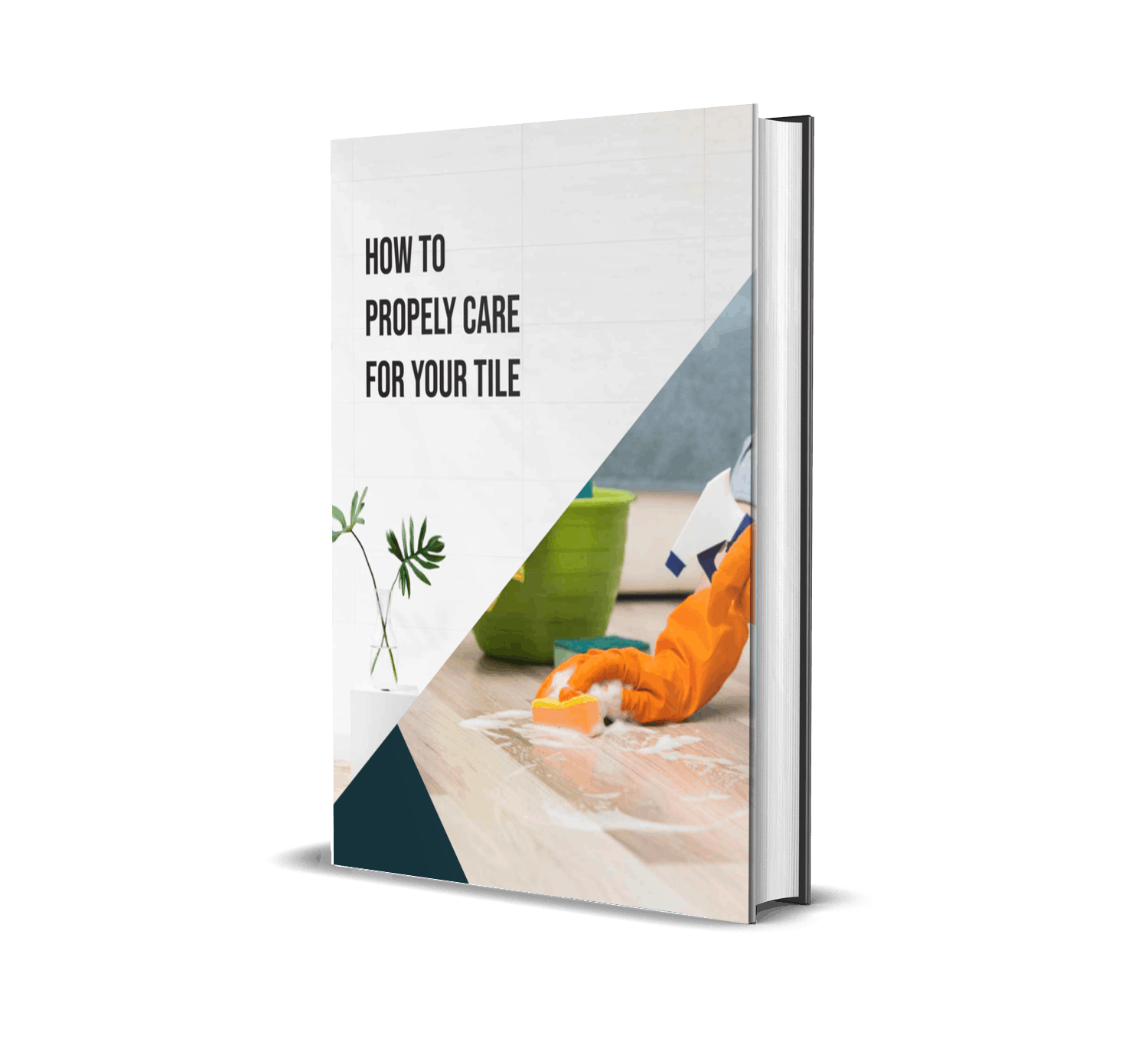The short answer is no, but the longer answer is, well, still no. And while we’re at it, let’s dash all hope that grout is waterproof. It is not. When it comes to tiling jobs, preparation is key in preventing water damage.
Tile adds so much character, style, and attitude to a room it’s difficult NOT to use it. Let’s start by looking at three types of tile and how they might work in a shower. Ceramic tiles are referred to as “water-resistant” since they’re not damaged by water but they can absorb water. Don’t use them in a shower project. Porcelain tiles are considered “waterproof” because water does not appear to absorb into the top of the tile even though it can. Glass is the only tile that is 100% waterproof. Still you can run into problems with any type of tile if your substrate is not properly waterproofed.
When evaluating the type of tile you want to use, you need to know its moisture absorption rate, especially if you’ll be using it in places where there will be a lot of water, like a shower. Let’s take a quick look at the four moisture absorption ratings:
- Non-vitreous (Low density) – Tile with water absorption of more than 7.0%
- Semi-vitreous (Medium-density) – Tile with water absorption between 3.0% and 7.0%. Ceramic tile is often in this category.
- Vitreous (High Density) – Tile with water absorption of more than 0.5%, but not more than 3.0%
- Impervious (Extremely dense) – Tile with water absorption of 0.5% or less. Porcelain tile is often rated as impervious or vitreous. And of course glass tile with its 0.0% absorption rate falls into the impervious category.
Tile, stone, and grout all retain some water, and the density of the tile affects how much. So before you rush out to the nearest home improvement store, think about how much water the tile will be exposed to and if the tile will be outdoors. An outdoor location is only an issue if you get major freezing temperatures in the winter – think Michigan, Minnesota, North Dakota, Maine, and Canada.
The durability of your tile will be only as good as what’s beneath it (a.k.a. the substrate). And here is where we need to stress that you should allow a professional to do this. You can surreptitiously check out the installer as he/she is doing the work, you know just to make sure they know what they’re doing. If your tile professional tries to mount your tile directly on drywall in your new shower, then you know they’re doing it wrong. Begone, rank amateur!
The reason we’re focusing on the shower here is that it is the place that dispenses the largest amount of water. Once water soaks through tile and grout, it can seep through to the studs causing the wood to swell. Just one simple and quick way to give yourself a huge headache and an even larger repair bill.
So it’s well worth the money to have the job done right the first time. Hire a professional to install your tile, especially in the shower since tile and grout are not waterproof. Ask neighbors for referrals or look up local businesses in your area through Home Advisor, Angie’s List, and others. The reviews should help you find a competent installer.
Let’s look at several of the correct practices that will assure you that your new tiled shower is in fact waterproof.
Making sure your new tiled shower is waterproof
Step One – Understanding shower systems
There are many options today for building a waterproof shower. A few of the systems that are popular now are sheet membranes, topical waterproofing and foam board with sealant. Sheet membranes are installed over drywall or cement board with either a foam pan or cement pan. Make sure the installer is covering all the seams and transitions with the appropriate banding. Topical waterproofing is painted on or spread over cement board. Again, the seams on cement board need to have mesh tap applied before the waterproofing. Foam board and sealant is my favorite application. I use either Laticrete or Wedi products. Both manufactures offer a foam board that is made of closed cell foam, making the board completely waterproof. The seams and screws are treated with a sealant, making the system 100% waterproof. Be sure you installer is following all manufacturers guidelines for whatever product is being used.
Step Two – How is the curb being built?
It’s important to pay attention to how the curb of your shower is being built. Over the years, contractors unfortunately have chosen and continue to chose 2×4 lumber, because it is convenient most likely. Most lumber is very unstable and can shrink overtime. This can cause cracking in your curb, leading to water leaks. Also, typically when shower glass is installed, the shower glass companies are putting screws into the curb, allowing water to get to the lumber. This can lead to rot that can spread beyond the curb and cause major issues in your home. Make sure your installer is using materials that won’t be affected by water or shrinking (concrete products or foam curbs that are available). If possible, chose shower glass options that don’t require screws in the curb or make sure the glass companies is using a sealant (silicone is the most popular) liberally in all of the holes they make.
Step Three – Popular products your installer should not use in your shower
Certain products have become commonly used in showers when they shouldn’t. I have mentioned one already.
-Dimensional lumber in your curb. Again lumber is prone to shrinking or rotting. Sticking to a cement product or foam curb eliminates the potential cracking and other failures when properly installed.
-Tile mastic to install the tile. Tile mastic is a premixed organic adhesive. Don’t use it in wet areas, on cement or fiber cement board, floors, with glass tile, or natural stone. Basically never use it anywhere – ever. Stop it right now. Even small amounts of water can reactivate mastic, causing it to never properly cure, or even cause mold and mildew growth.
-Drywall. This is a grey area for the tile industry. I personally don’t agree with using a product that is so easily affected by moisture in the part of your home that see the most water. Cement board is readily available everywhere and is a much safer option. The Tile Council of North America also has a helpful FAQ on the topic to help make an informed decision;
-https://tcnatile.com/resource-center/faq/showers/
Step Four – Perform a Flood Test
If your shower will leak, it’s best to find out before it’s tiled. To perform a flood test, your installer should plug the drain and fill the shower with water just below the top of the curb. If there are no leaks, you can rest assured, knowing your shower has been properly waterproofed before you hand over that last payment.
In conclusion, when tiling a shower, be sure to hire a professional. It takes a lot of experience to properly install tile. There are several steps for preparation and waterproofing that cannot be skipped. Now that you have some of the basic waterproofing facts, do yourself a favor and hire a competent tile installer. You’ll be able to ask the right questions and understand the process as it goes along. And when it’s all said and done, you’ll have a sparkling new waterproof shower!
Sources:
- Build Direct
- Floor If
- DIY Tile Guy
- tcnatile.com

